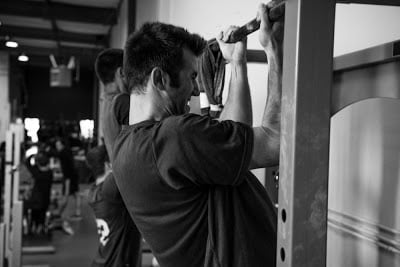
One of the biggest grey areas in sports medicine and sports science is the return to play, the point in injury recovery when an athlete is able to go back to playing sports.
It has been difficult to objectively prove the milestones needed for each stage of the process. As a result, time estimations have become the most conservative approach, yet these recommendations still remain quite subjective.
However, upper body injuries are even more difficult than the lower body, perhaps because of the insufficient tests available to assess an athlete’s current state. It is critical to have an objective evaluation tool that can first address the body as a whole, such as a Movement Signature, and second to assess the current state of the upper body.
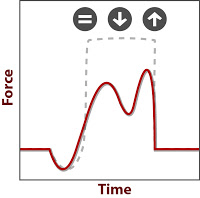
So the first key concept in prevention and recovery of upper body injuries is to maximize the Movement Signature, particularly the trunk positioning, in order to maximize efficiency during movement. For example, if a lower LOAD is present, shown to the right, the athlete is not initiating the movement effectively through their lower body, particularly the ankle joints and quadriceps. As a result, the trunk and upper body have to initiate the force, in addition to the normal transferring and finishing portion of a movement.
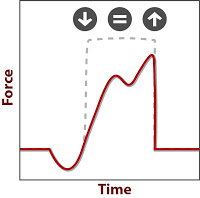
The second major movement dysfunction associated with upper body injuries is the loss of trunk positioning, displayed by a low EXPLODE scan shown to the right. The deep valley when transitioning from the LOAD to the DRIVE phase indicates a loss of tension through the core and trunk musculature.
The second step for an injury clearance is a skill, something more specific to the sport or movement itself. This concept is validity, a number that describes the extent to which a test measures what it claims to measure. Lower body injuries tend to provide more studied and accepted valid tests. For example, an athlete in ACL return to play, performs a test of agility or sprint that provides an assessment for an individual both fresh and under fatigue.
For upper body, many tests have been studied, but 2 tests have emerged as both reliable (results are consistent) and valid. A June 2011 study examined various upper body tests for strength, as well as their ability to predict performance in an overhead throw. The authors found that the modified pull-up test was the best predictor of performance on the softball throw for distance. The second best predictor was the push-up test.
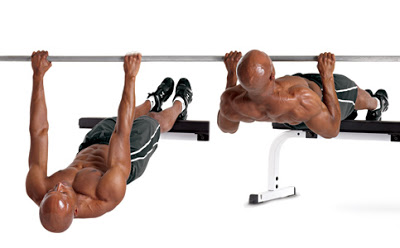
One of the keys to any test or exercise is the specifics and these authors did an excellent job of defining what the parameters of these exercises were. The pull-up test was actually modified (an inverted row shown above), allowing a smaller load than a pull-up because less body weight is needed to pull-up oneself. The subjects performed 3 sets of 15 seconds. Similar to our work sets, the average # was taken from these 3 sets.
Men performed the pull-up with their legs supported at their heels. Women had their lower legs supported just below the knees. On the timed Push-Up for 3 sets of 15 seconds, women performed the movement from their knees. Both movements’ range of motion begin when from the arms are extended (straight) and then finish at 90 degrees flexion (bent), which is when the upper arms are parallel to the ground.
We know the pull-up, or in this case the modified pull-up, are the most efficient exercises for stimulating the larger upper body muscles. The authors went on to explain that these shoulder and back muscles act as stabilizers and decelerators, that serve to resist distraction forces about the shoulder girdle during throwing which may explain the correlation with throwing distance identified in this investigation.
There are 2 main adaptations we have made to these findings based on our sole focus of competitive athletes. The first adaptation is the use of the underhand row due to the greater integration of posture and global fascial involvement.
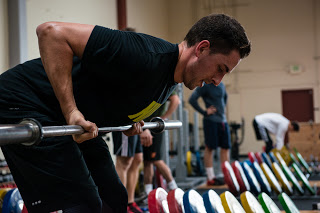
The second is the loading scheme. The authors set forth time periods of 15 seconds, encouraging the push-ups and pull-ups to be performed as quickly as possible. We have eliminated any of these loading schemes in our workouts, setting a time period to perform a specific movement only encourages quantity over quality. When working with athletes, they achieve sufficient stimulus of this work capacity in their sport. The way we can specifically achieve conditioning or strength endurance without sacrificing quality is by objectively reducing the rest period.
Next week will finish the return to play recommendations for upper body injuries, specifically some baselines for clearance. Three takeaways from today’s conceptual approach…
upper body injuries should be addressed through your Movement Signature first
pull-ups (rows) and pushups are the most efficient (reliable and valid) tests for overhead sports
seek quality first (perfection of reps) as opposed to quantity (# of reps)
Baker, DG and Newton, RU. An analysis of the ratio and relationship between upper body pressing and pulling strength. J Strength Cond Res 18: 594–598, 2004.
Negrete RJ, Hanney WJ, Kolber MJ, Davies GJ, Ansley MK, McBride AB, Overstreet AL. Reliability, minimal detectable change, and normative values for tests of upper extremity function and power. J Strength Cond Res. 2010 Dec;24(12):3318-25.
Rodney J. Negrete, William J. Hanney, Morey J. Kolber, George J. Davies, Bryan Riemann. CAN UPPER EXTREMITY FUNCTIONAL TESTS PREDICT THE SOFTBALL THROW FOR DISTANCE: A PREDICTIVE VALIDITY INVESTIGATION. Int J Sports Phys Ther. 2011 June; 6(2): 104–111.